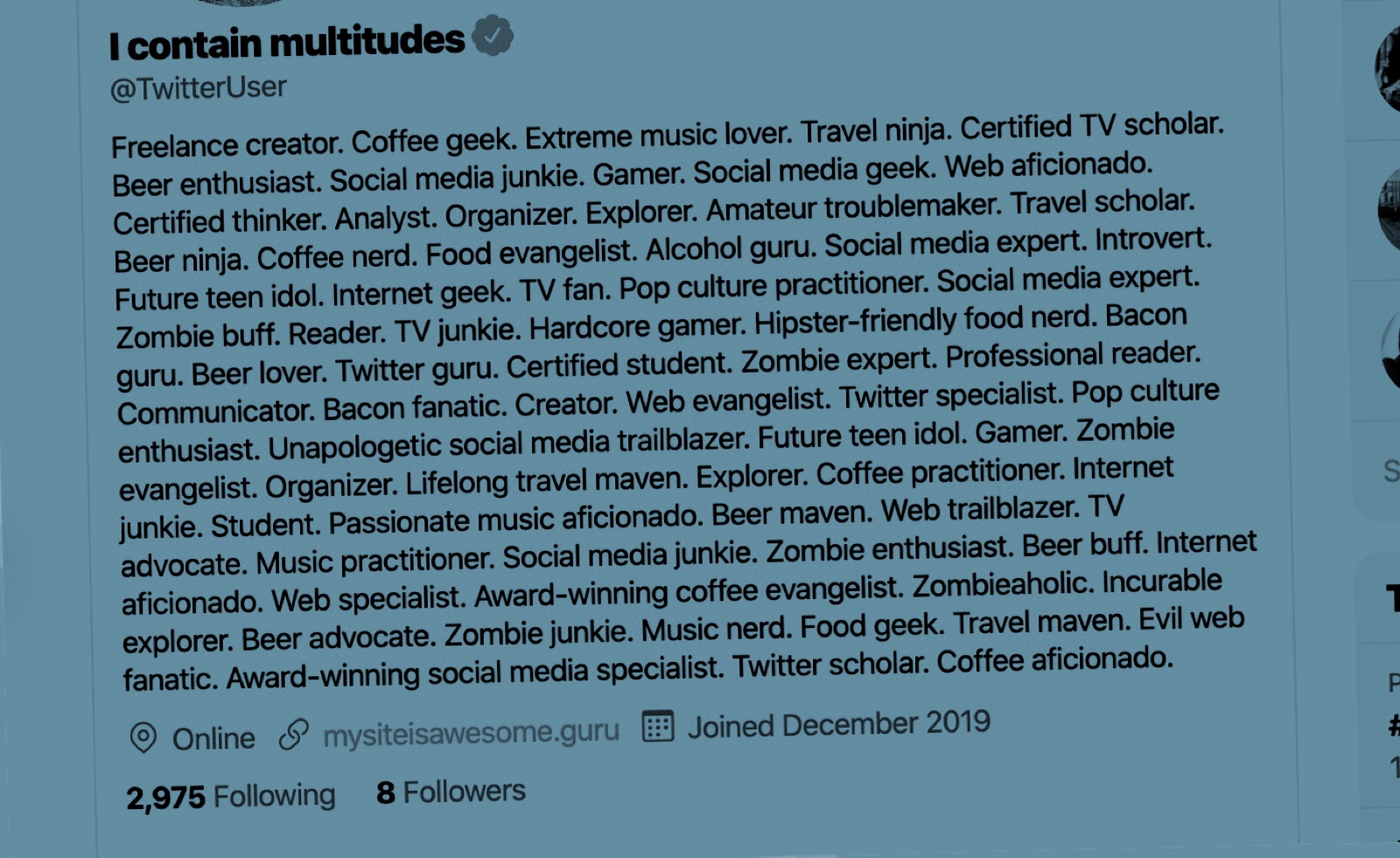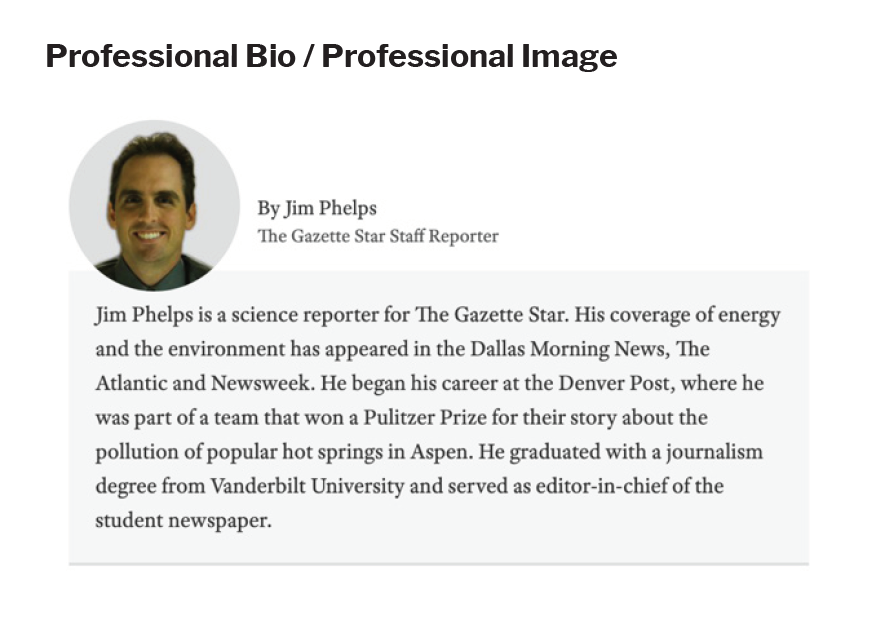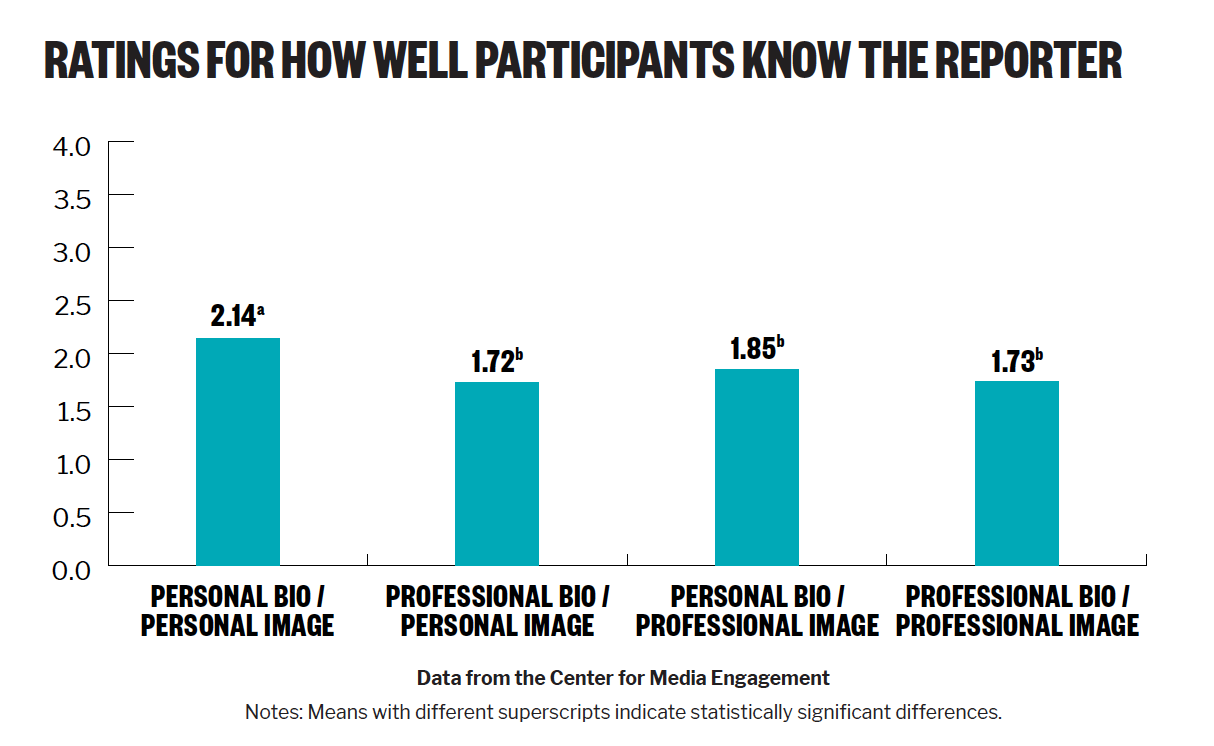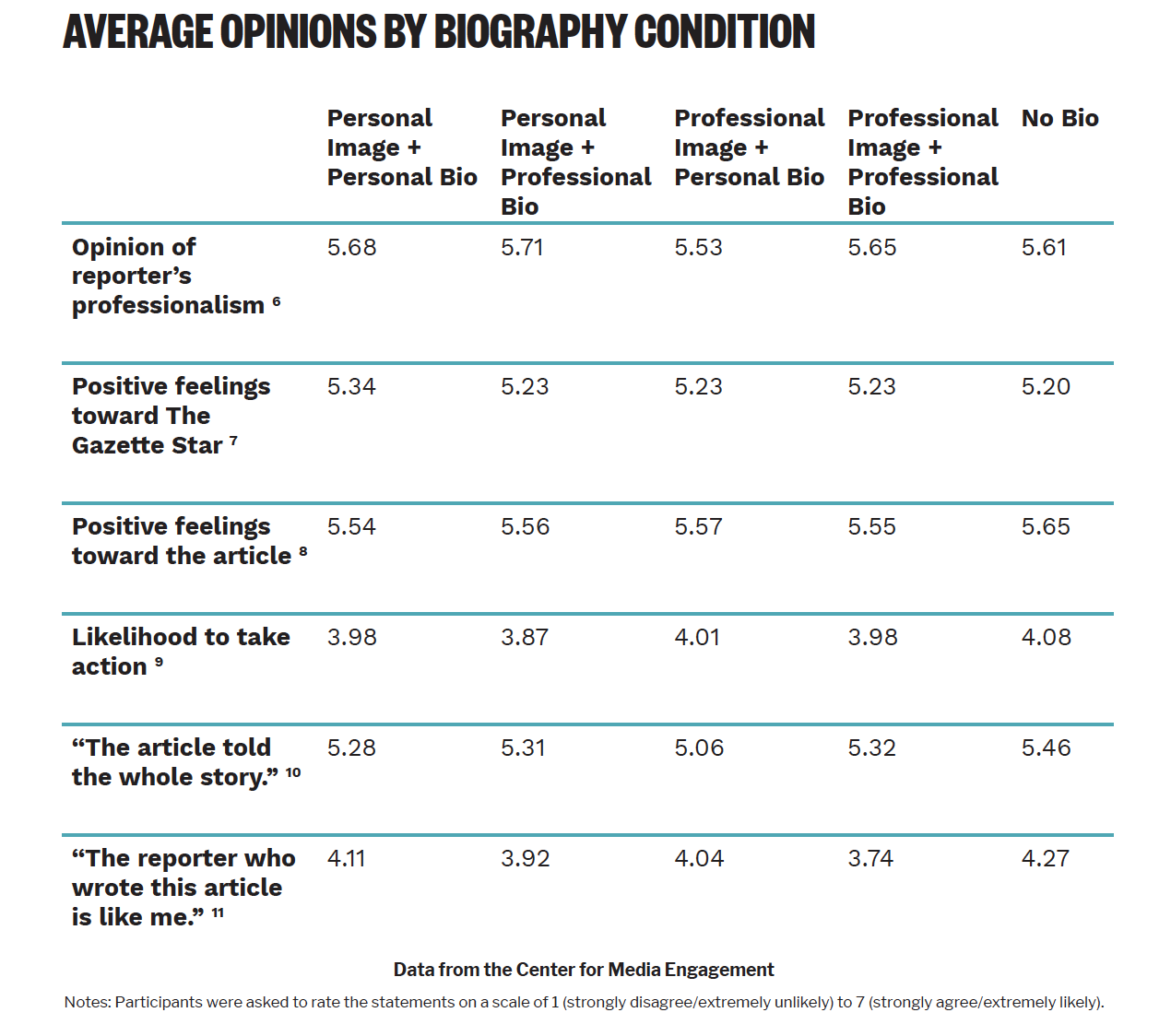
If you’re reading this, I’d bet you’ve spent a solid amount of time crafting your bio (whether for work or for Twitter) and choosing just the right photo. You only get 100-something characters to show that you’re fun but professional, approachable but serious about accountability journalism. You take restaurant recommendations and story tips via email or DM!
But as it turns out, your readers…don’t much care.
A new study from the Center for Media Engagement at the University of Texas (with support from the Democracy Fund) tested how the inclusion of a reporter’s bio might influence a reader’s trust.
“Using a personal photo and including personal details in a reporter’s biography made participants feel they knew the reporter better, but this feeling didn’t influence readers’ attitudes about a news organization more broadly,” the report says. “This suggests that providing journalist biographies isn’t enough to boost trust and engagement when used alone.”
In the experiment, 634 participants were asked to read a made-up bio of science reporter Jim Phelps of The Gazette Star, which was accompanied by a photo, and then read a story with his byline about a superbug. (Not coronavirus.) Each was given one of these five variations:
Here’s what Jim looked like to participants — first personal pic/personal bio, second professional/professional.


When asked how well they felt they knew the reporter, the readers who’d been given a personal bio and a personal headshot felt they knew the reporter better — but only marginally.

“We found that readers were equally engaged and expressed similar levels of trust in the reporter and the news organization regardless of whether the biographies were present and irrespective of whether the biographies were more personal or professional,” the report says. “However, readers did feel they knew the reporter better after reading a biography with a personal photo and personal details.”
CME asked participants another slew of questions about how they felt about the reporter, the article they read, and the news organization. So even though Jim was the editor-in-chief of his college newspaper, loves the smell of barbecue on the lakefront, and won a Pulitzer (?!), no variation of the bio and headshot combination moved the needle in a significant way.

Overall, CME said that newsrooms shouldn’t discount reporter bios all together, but instead should use them in conjunction with trust-building strategies that do work, like including information about why a story was written and listing ethics, diversity and corrections policies.
You can read the full report here.